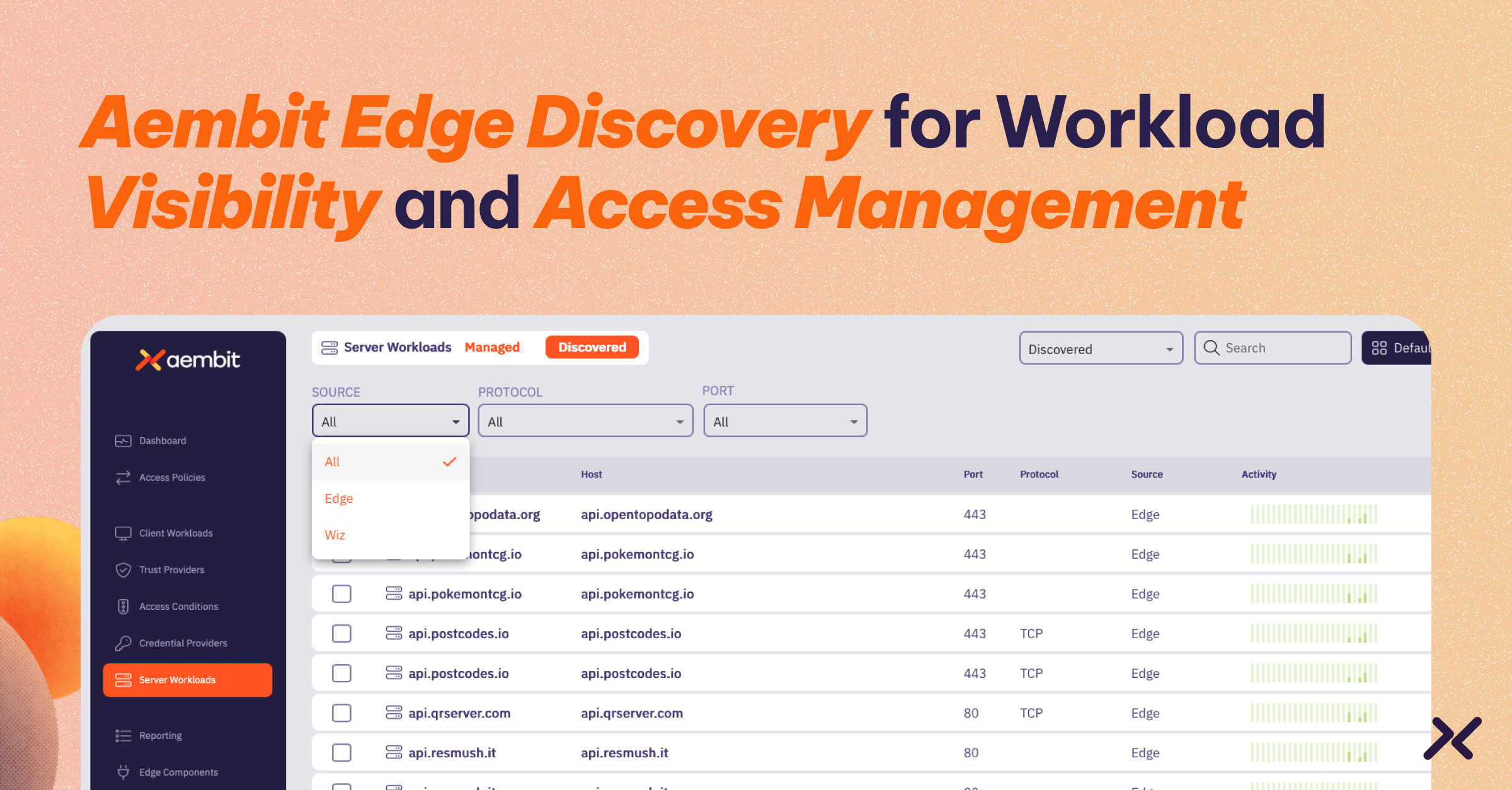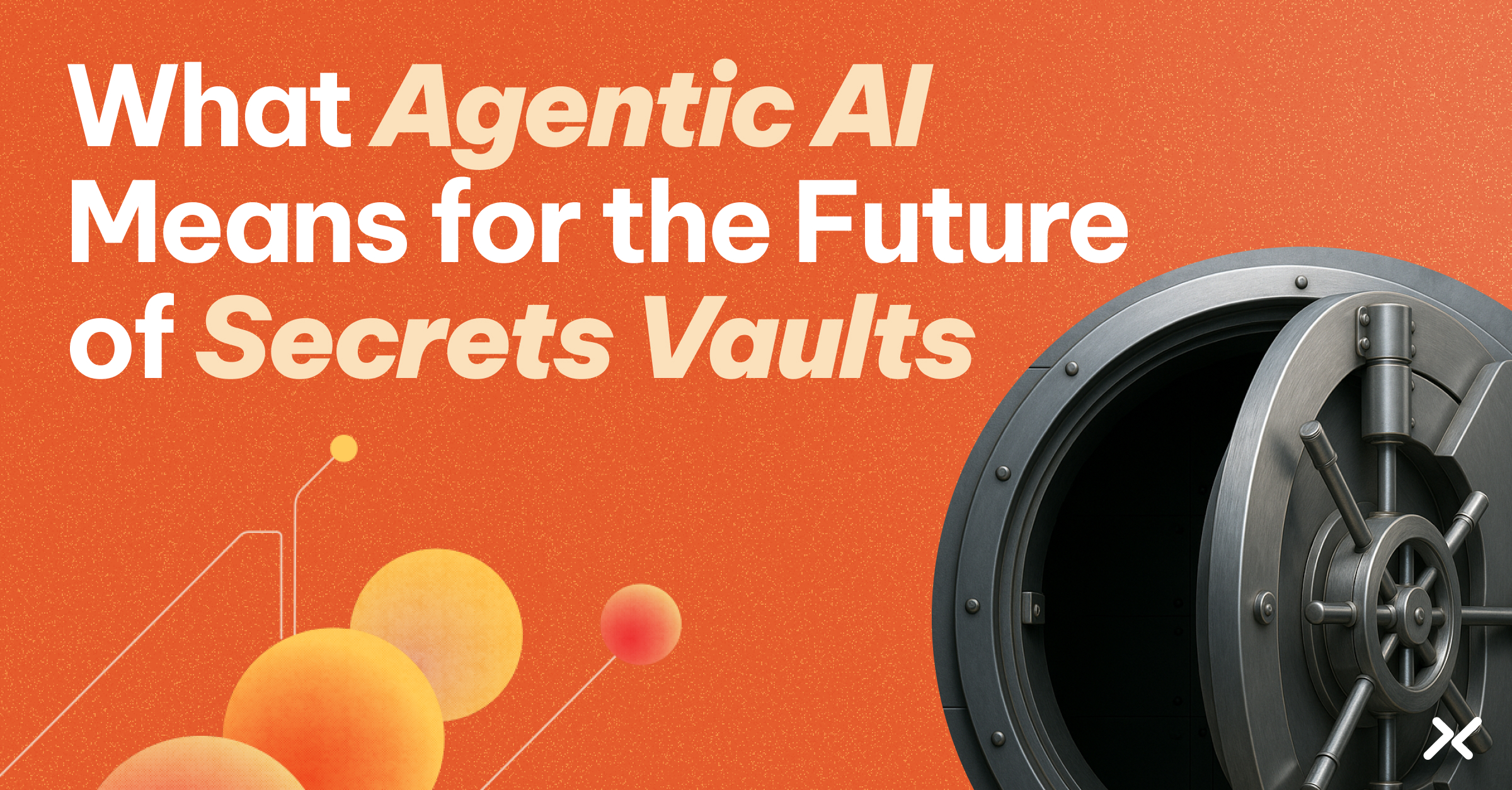Aembit has extended its universal identity and access management approach for workloads and non-human identities to serverless architectures.
This enhancement is a crucial step forward in providing a single, comprehensive IAM approach for enterprises everywhere they operate – from on-premises to SaaS to cloud-native architectures.

The Challenge of Managing Secrets in AWS Lambda
As serverless computing gains traction, AWS Lambda has become a cornerstone for building scalable, event-driven applications. Like most applications (serverless or otherwise), your typical serverless function requires access to other data, applications, or infrastructure to get its job done, and these may or may not be AWS resources. In order to have that access, developers must code it, typically using secrets such as API keys or usernames and passwords. And we’ve all seen what kind of problems embedding these secrets in your code case create.
Why Secrets in Lambda Are Different
However, managing secrets in AWS Lambda presents unique challenges. Traditionally, applications running on virtual machines or containers have relied on secure, persistent storage solutions for managing sensitive information such as API keys, database credentials, and other secrets (We’ve discussed these problems at length!). Vaults like KMS solve some of this issue, but struggle with the move to secretless, identity-based access. In a serverless environment, the ephemeral nature of Lambda functions complicates this process even further, and brings a different developer dynamic to deal with.
1) Ephemeral Nature
Lambda functions are stateless and ephemeral, meaning they only exist for a short duration during execution. This transient nature makes it difficult to securely store and retrieve secrets without exposing them to potential risks. Moreover this means that managing identity of these functions is complex.
2) Environment Variables
Many developers resort to using environment variables to inject secrets into Lambda functions. However, this approach can lead to security vulnerabilities if not properly managed, as environment variables can be inadvertently exposed through logging or debugging processes.
3) Manual Management
Managing secrets manually across multiple Lambda functions can quickly become cumbersome and error-prone, especially in complex, large-scale deployments. Ensuring that each function has access to the right secrets at the right time requires meticulous coordination and can lead to operational bottlenecks. Nothing screams ‘security hole’ like a spreadsheet of secrets to be maintained.
4) Developer Priorities
Let’s face it, not every function written on Lamba has a grand plan, even if it ends up sticking around for months or years. Developers who are quickly putting together a script to grab data from your customer database or run a one-off analysis of your sales data do what’s fast and easiest, which today is typically embedding an access secret in the code.
How Aembit Helps to Solve the Problem
Aembit’s solution for managing secrets in AWS Lambda starts with Lambda Containers. We use a unique approach that is identity-driven, policy based, and secretless. For a deep-dive on the white process, check out our architecture whitepaper. But at a high level, here’s how it works:
Identity: Aembit cryptographically verifies the identity of a Lambda function when it requests access to a sensitive resource.
Policy Enforcement: Aembit Cloud enforces IAM policies in real-time, verifying permissions before granting access to any resource. This ensures that your serverless functions operate within the boundaries of your security policies, providing a consistent and compliant security posture across your cloud environment.
Conditional Access: Aembit cloud can enforce dynamic conditions, such as time of day or geographical limitations.
Dynamic Token Management: Aembit manages tokens and credentials on-the-fly, ensuring that your Lambda functions consumes the necessary secrets only when they need them. Moreover, for resources that support short-lived, secretless tokens, Aembit can mint or deliver them to the Lambda function. This reduces the risk of exposure and enhances the overall security of your applications. Just as importantly, Dev and Ops no longer need to handle the credential, meaning less surface area against which to lose the secret.
Comprehensive Auditing: Aembit logs all access requests and actions taken by the proxy, providing detailed audit trails and monitoring capabilities. This enables you to track usage, detect anomalies, and maintain compliance with security standards.
Transparent, No-Code Support: By leveraging Lambda container extensions, Aembit Edge (our no-code auth proxy) offloads the work that developers typically have to do to enable access. So they do less work while their code is more secure. Developers can also take advantage of our API approach if container extensions are not an option
Benefits of Aembit Access Management for AWS Lambda
More Secure Access
Your Lambda functions don’t store secrets, which can be stolen or abused.
Go Secretless
Move from static, long-lived credentials to dynamic, short–lived tokens, which further reduce your risk.
Reduced Management
Devs and DevOps don’t have to manually manage credentials for workloads. This is both a security benefit and a large operational efficiency gain.
No-Code Auth
Developers don’t need to code auth – Aembit offloads this for them. That means they can focus on building features that advance your product.
Centralized Access Management
Whether it’s AWS Lamba, GCP services, or K8s running on-prem, you have one single method to enforce and report on access among workloads.
Alternatives for Managing Lambda Access
Right now you’re probably thinking through exactly how your teams are managing secrets within Lambda today. There are several approaches your team is probably using, and based on our experience they’re probably using them all in bits and pieces. Each has its own set of advantages and disadvantages.
Certificates
Pros
Security: Certificates provide strong security through encryption and mutual TLS authentication.
Isolation: Certificates can be isolated to specific functions, reducing the risk of broader compromise.
Cons
Management Complexity: Issuing, renewing, and revoking certificates can be complex and time-consuming. Put it this way – if you thought certificates were hard to manage for Kubernetes clusters, well, this is next level-difficulty.
Scalability: Managing certificates at scale requires significant operational overhead.
AWS IAM Roles
Pros
Native Integration: IAM roles are natively supported by AWS services, ensuring seamless integration.
Granular Permissions: IAM roles allow for fine-grained access controls, enabling precise permission management.
Cons
Role Proliferation: Managing numerous roles for different functions can lead to role proliferation, making it difficult to maintain and audit.
Limited to AWS: IAM roles are specific to AWS, limiting their applicability in multi-cloud or hybrid environments.
IAM for Workloads and Non-Human Identities
Pros
Unified Management: This approach allows for unified management of all nonhuman identity access, including workloads, across your environments – multiple clouds, on-prem, and saas services.
Dynamic and Automated: Policies and permissions can be dynamically managed, reducing the need for manual intervention and minimizing the risk of misconfiguration.
Scalability: Designed to scale with your workloads, making it ideal for complex, large-scale deployments.
Cons
Complexity: Implementing a comprehensive IAM strategy for all nonhuman identities requires careful planning and may introduce initial complexity.
Integration: Ensuring seamless integration with all services and applications might require additional effort and configuration.
At Aembit, we believe that IAM for workloads and non-human identities is the best approach for managing access in AWS Lambda environments. It offers a robust, scalable, and unified solution that addresses the challenges of managing secrets and permissions in serverless applications effectively.
Why Choose Aembit IAM for Your AWS Lambda Containers
The short of it is this: If you’re concerned that your non-human identities have ungoverned access to your sensitive data and infrastructure, you need identity and access management, just as you already have in place for humans. While the principles are similar, workload IAM has a different technical approach that gives you these specific benefits:
1) Unified Security
Aembit offers a unified approach to IAM, extending the same robust security principles from your on-premise VMs, SaaS services, and cloud-native applications to your serverless functions. This ensures a consistent security framework across your entire cloud infrastructure.
2) Operational Efficiency
By automating the management of secrets and access controls, Aembit reduces the operational burden on your development and DevOps teams. This allows them to focus on building and deploying applications rather than managing security intricacies.
3) Scalability
The Aembit -platform scales seamlessly with your workloads, providing reliable and efficient IAM services regardless of the size of your deployment. This makes it an ideal choice for enterprises with heterogenous environments, stringent reporting and auditing requirements, and varying scale.
Getting Started with Aembit IAM for AWS Lambda
Integrating Aembit IAM with your AWS Lambda containers is straightforward. Our detailed documentation provides step-by-step guidance on configuring IAM for serverless functions, including best practices and common use cases. Whether you are new to serverless or an experienced AWS Lambda user, Aembit IAM simplifies the process of managing identities and access controls.
You can use our free tier, or if you’re not ready for that, simply request a custom demo and we’ll help show you what we’re all about. –



